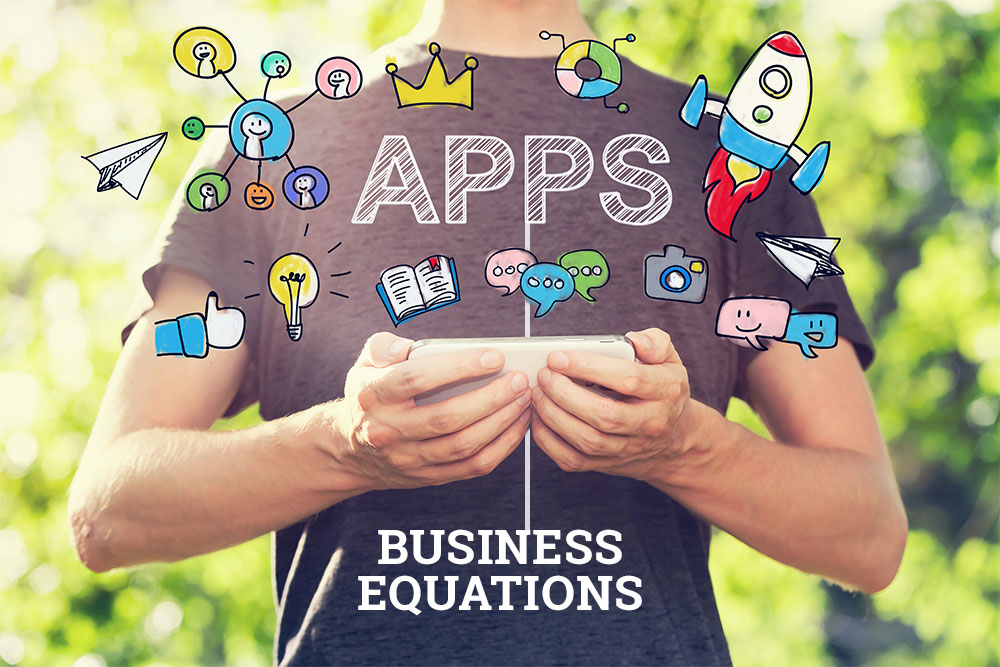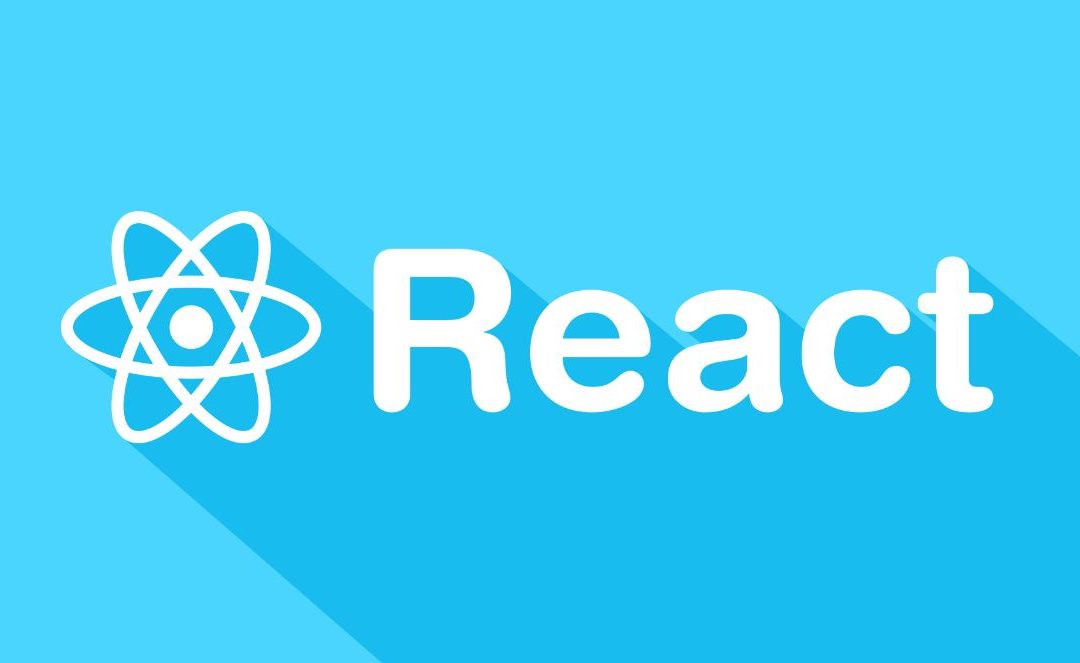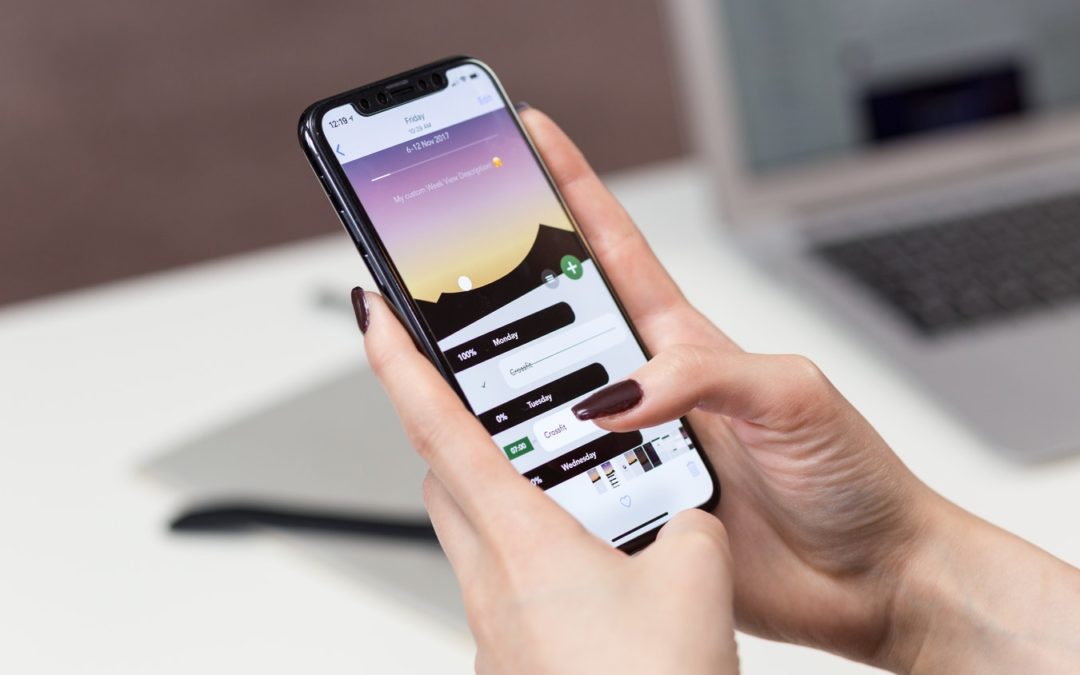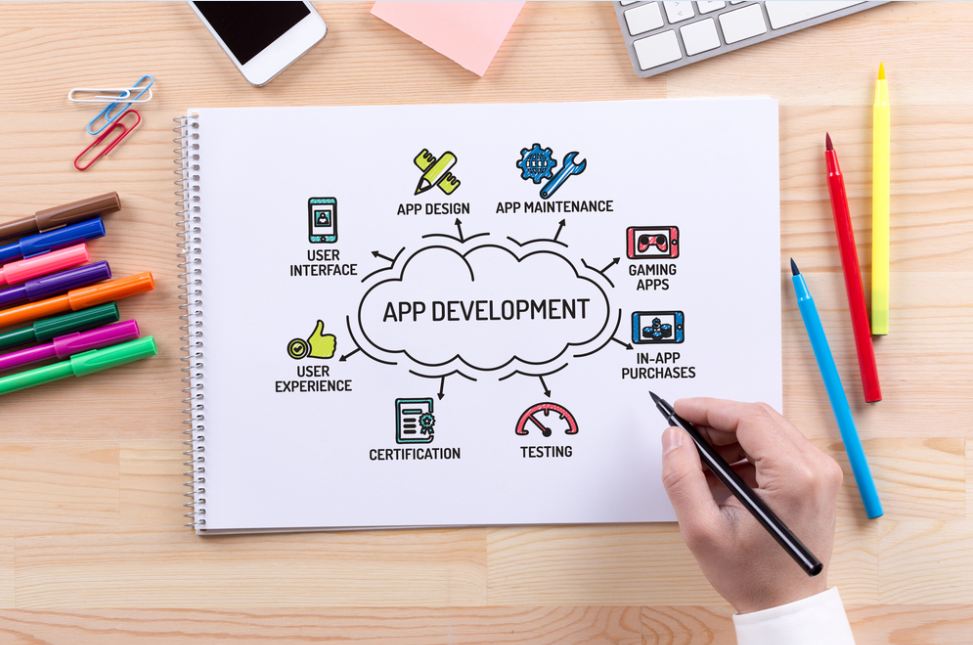Building an app is easy. The real challenge, however, lies in monetizing it. With millions of apps flooding App Store and Google Play and market forces resorting to a freemium model, app publishers are striving to make their mark. The stiff competition in the battleground of the app stores is still nowhere deterring the relentless spirits. It is estimated that in 2016, mobile apps will solely collect $58 in revenue and even the popularity of mobile phones will increase by manifold. So, in such a scenario, how can you make the most of this opportunity and secure a place amidst the big giants in the market. The trick lies in the number game. To monetize your app well, you must know the math that governs the app business. If you are through with the concepts of metrics and revenue drivers, you can frame the perfect business model. It can reveal the undue costs that are increasing the overhead expenses as well as point out the potential areas that can be worked on to achieve all the objectives.
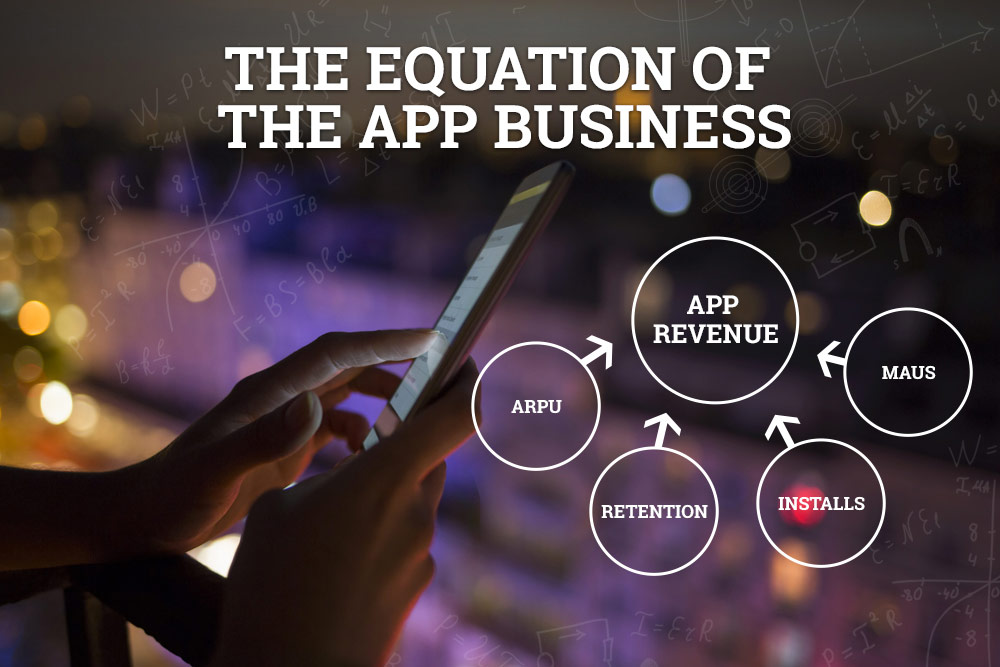
The math of the app business is very much practical in every sense. Actually, the entire app business comes up to one equation. Master this equation and you will successfully attain leverage by modulating the main variables to bring out a specific clear outcome from the same. So, are you all set to know the nitty- gritty of the math of app business and create your share in this grilling market? Read on to explore the magic equation and gain an edge over other players –
A Simple Equation
There is no doubt in the fact that an app’s performance and profitability depends on a lot on the right metrics and strategies. Agreed, each app has a different set of design and employs relevant business models still, there are only a few standard metrics that can determine success. These metrics help to figure out monetization better. Easily quantified, they unite with the other forces quite typically, be it any app or business model. Have a look at the list below:
Monthly Active Users (MAUs)
MAUs stand for the amount of mobile app users who were in active use with your app over the period of last month. Even though marketers and product managers will define ‘active’ in different ways, the active customer is generally the number calculated both on the usage and last seen statistics. It is seen that app publishers deem any user who has launched your app at least once as an active customer, but there are publishers who have more rational criteria or consider active customers on a weekly or daily basis.
Installs
These are the users who have not only downloaded your app but shown a trust and installed it on their device. Almost 30% of the total downloads get converted to installs.
Customer Retention
It determines the app’s potential to interact and retain its users over a long period of time, here, say, one month. The different app store has different retention ratios, with 40% being the average rate for one-month retention and 4% for one-year retention.
Average Revenue Per User / Customer (ARPU)
ARPU calculates the average dollar amount each user contributes to your app’s revenue over a given period of time. It is usually summed up in monthly terms and generally averages out your revenue based on the monthly active users instead of the total install count.
ARPU= Total revenue collected over a given period of time / Total number of active users within a given time span
Customer Insights
These are the patterns and major findings discovered from user feedback and app analytics. Customer insights refer to the needs, wants and behavior trends of your customers. If followed upon, such findings are of great use in recognizing new elements to modify the product roadmap or enhancing particular areas of your app to benefit customer interaction, loyalty, and revenue.
Personalization
Unifying the user experience and individual preferences of your users based on the report of your customer's insights. The in-app experience can have a more personalized feel by having contextually stimulating, informative content matching your customer’s individual way of brand communication. A personalized app experience has become a must to deliver your customer lifetime value and increase the total user count.
App Revenue
App revenue is the dollars generated by way of revenue by the users over a given timeframe, here, say, a month. App revenue can be collected through advertisement revenue, in-app microtransactions, subscriptions, or in the case of paid apps by downloads.
The Sum Total
These metrics when bought together combine to frame one equation that explains the length and breadth of app business. The equation is:
Monthly Active Users * Monthly Average Revenue Per User = Monthly Revenue
In this equation, monthly active users, average revenue per user and total revenue are all direct, calculative variables that amount to a single, constant equation. The other four variables can be considered as your levels. Altering any of these affects the total revenue, but the relationship loses its typical trait. As this equation is simple, it is more understandable. While making decisions concerning the roadmap of your app, using this one equation helps you to evaluate all the aspects and thus, enhance your performance.
As we engage with developers and discuss the growth of business, we find an increased dependence on this equation so as to successfully track the growth chart. Competent developers make it a rule to use this equation while analyzing the direction, features, and customer feedback. Keeping the outcome in mind is a sure shot way of getting things done.
Time for Action: The Impact
As we have already understood the key variables in the app business’s equation, the question that surfaces now is how can these variables be used to our advantage? As we have already elaborated a lot on these attributes, let’s start with the basic in this equation:
Installs
What makes the user download your app? The customer interaction goes via two paths that lead to the ultimate decision of downloading - 1. Discovery and 2. Referral.
1. Discovery
Discovery is great at triggering awareness and installations. Presently, about 65% of the app downloads are due to the users exploring the app stores either through the search function or by the ranking top charts. Users tend to discover a lot of stuff by browsing through the categories and featured lists and that is the reason why developers are so keen on getting their apps featured or score a rank higher. The rest is followed by general searching, which is more dependent on app store optimization so as to get the app in the notice of the potential customers and beat the competitors.
2. Referrals
On the contrary, referrals are when a trusted source spreads a good word for your app and in turn, influences the potential customer to download it from one of the app stores. The different nature of these two paths is an important point to consider while contemplating how to enhance the installation numbers for your business.
Customers who seek the referral path usually visit your app’s product page with the full intention to install the app. They have been deeply influenced by someone they trust to give your app a shot. Discovery path customers, however, stick to the safe approach of window-shopping as they browse through the app store and analyze the apps. Let us learn about the differences in these paths in more detail and see how they can be utilized to the fullest-
It’s All About Finding: The Discovery Path
If you want to grasp the discovery path better, then you must view your app’s app store product page as the medium for marketing; an area that should be highly optimized. Much like the landing page, your product page instigates call-to-action and has its own relevant metrics; most significant being its conversion rate. Wait a minute.
Hope you aren’t surprised reading about the conversion rate. It is wrong to assume that the people who are seeing your app’s product page are surely installing the app. By now you must know that mostly when someone’s looking at your app’s page in the app store, they are planning not to install your app. With our studies in app store product pages and experience in third-party analytic tools, we arrive at three pieces of data that are important for you to know-
- In the case of free apps, fewer than 1 in 3 views of the app product page result convert to download.
- In the case of paid apps, fewer than 1 in 10 views of the app product pages amount to a purchase.
- For both the category, only 30% of people who download move on to the stage of installing it.
Surely getting a free lunch is mouth-watering, but not necessarily an app. Free or not, if people aren’t impressed they will pass on your app.
How Discover Customers take decisions?
Now, it is possible to impact your app store conversion ratio by simply changing any of the three decision points for a user who is on discovery path-
- The app’s description
- The app’s screenshots
- The app’s ratings and reviews
Being witty in your app’s description, from the way to explain its function to stating the recent updates and your call-to-action, all play a vital role in influencing your user’s decision to install your app. Impactful copy, with stress on advantages and key use cases, will always work in your favor. Remember to always optimize the design of your app’s description so that you can optimize readability too.
Long blocks of text that run together pose a difficulty in reading instead of neatly broken up text with line breaks. Go for Unicode characters in place of bullets, checkmarks, and other visual signals. Make sure you view your app’s description in every platform so that it is presentable in every situation.
Yes, it is not easy, but it is totally the effort. Your app’s screenshots impart a touch of realism to your words and give the users an idea of what to expect on their screen. Go for variations in screenshots and descriptions and see for yourself the effect on the app’s installation rates. The jackpot, however,
Make sure you view your app’s description in every platform so that it is presentable in every situation. Yes, it is not easy, but it is totally the effort. Your app’s screenshots impart a touch of realism to your words and give the users an idea of what to expect on their screen. Go for variations in screenshots and descriptions and see for yourself the effect on the app’s installation rates.
The jackpot, however, in swaying downloads and purchases of your app are ratings and reviews. The overall rating volume and the most recent reviews serve as a great factor in pulling your potential customers. This is because the ratings and reviews are the social proof of your app. Wonderful ratings or relative complaints are powerful indicators for the average customer.
A review from another customer has a greater impact as compared to the thoughts of the app developer. Indeed, changing your app’s descriptions and screenshots are significant activities, but they are somewhat hidden because of the impact of the ratings and reviews on the conversion rates.
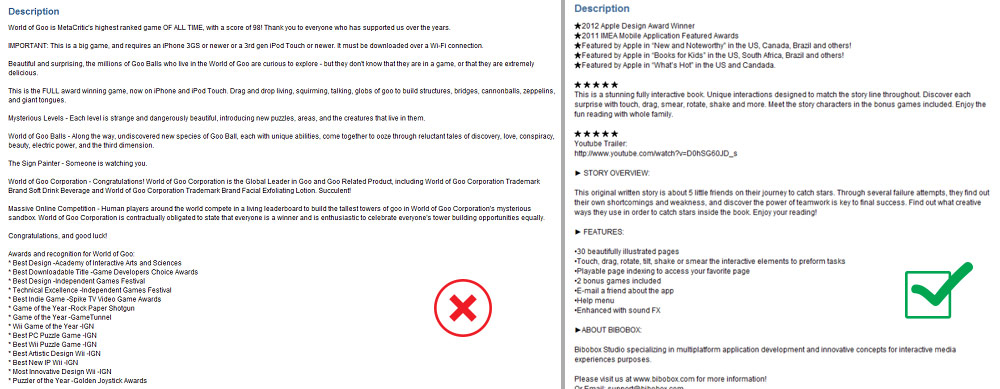
The jackpot, however, in swaying downloads and purchases of your app are ratings and reviews. The overall rating volume and the most recent reviews serve as a great factor in pulling your potential customers. This is because the ratings and reviews are the social proof of your app. Wonderful ratings or relative complaints are powerful indicators for the average customer.
A review from another customer has a greater impact as compared to the thoughts of the app developer. Indeed, changing your app’s descriptions and screenshots are significant activities, but they are somewhat hidden because of the impact of the ratings and reviews on the conversion rates.
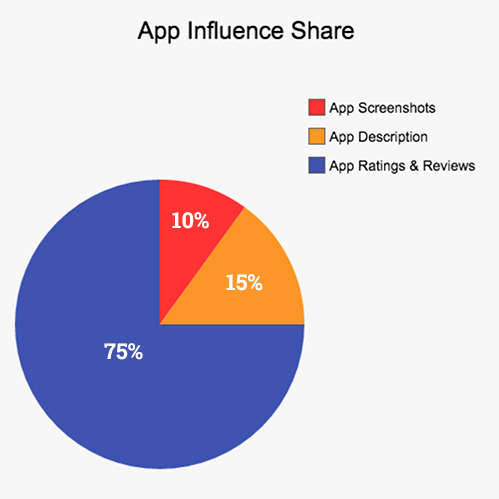
It’s The Word That Matters: The Referral Path
The referral path is a great example for apps like Angry Birds or Clash of Clans, which garnered so much popularity. Very few apps get that much attention, but many apps flourish through the loyalty and the love of the audience. If your app is live and has faced traction, chances are you failed to impress initial fans. Remember every loyal app customer is a potential salesperson for you. But rather than waiting for your app customers to spread the word and share your app with others, why don’t you motivate your customers to take the action.
Yes, there are easy yet powerful ways to prompt emotional connections with the people using your apps that can make you a winner in the crowd. Firstly, think what you can share in your app. In addition to sharing, try to engage on a personal level with your app customers. Make the process of feedback easy for them and respond to their queries quickly as this influences customer experience tremendously. Your dialog establishes an emotional connection and adds value to their opinions and experiences.
Meaningful engagement with the customers means that they will further talk about the app to their friends and share it as you have successfully connected with them and given importance to their experience. Apps that engage with their customers record high levels of referral-based downloads, just through listening.
Make the process of feedback easy for them and respond to their queries quickly as this influences customer experience tremendously. Your dialog establishes an emotional connection and adds value to their opinions and experiences. Meaningful engagement with the customers means that they will further talk about the app to their friends and share it as you have successfully connected with them and given importance to their experience. Apps that engage with their customers record high levels of referral-based downloads, just through listening.
Keep the Customers: Retention
Reducing retention rates and growing acquisition costs are evidence that the retention problem is more serious than the discovery problem. Achieving a download is great, but for every 100 downloads today, only four of those customers stick to the usage of that app a year from now. The drop off rate is a big concern, with almost 60% of the initial users abandoning the app in the first month.
This can be tackled through a few steps. The first is you track the rate. We suggest using some form of analytics within your app. Be it Google Analytics, Flurry, or even if your own measurement tool, you can get an estimate as to what is happening after a user installs your app. Measurement is critical, but that is not it to control the retention equation. To affect the equation, update and refine your app regularly.
Updates Are Must
Developers who are involved with updating and improving their apps on regular basis record higher rankings and more installs. The reason is that the update mechanism successfully re-engages with the customers who have long forgotten your app or gave up on it due to crappy experience. Each update reminds the user that you exist.
Also, regular updates give an impression to your app customers that you are interested in investing in their experience. If your app is present in the App Store, don’t go for too many updates as it will reset your average rating and the customers will be scattered over many versions, hence making testing a big challenge for you.
Reach With Customer Database
Distribution in the app stores is tough as much of the details of the user profile and journey can’t be reached to the developer. This, however, can be dealt with by using optional or required logins for your app. You can create a database of your app customers for generating better customer insights. We advise on making logins optional and giving great benefits to your users for logging in such as saved progress, personalization or activity streams that are related to app activities and open for registered customers. The login system you include must give a special advantage to your app’s customers.
Further, the reason to login can reveal more about your app’s customers, such as an e-mail address or alternative contact info. Once the database is framed, you can use the database to stay in touch with your customers on a regular basis, share the app updates, sales or announcements, or even other apps in your portfolio. Given the fact that majority app customers abandon your app in the first month itself, forming an external channel is a great way to communicate with your app users and have powerful re-engagement.
Time To Monetize
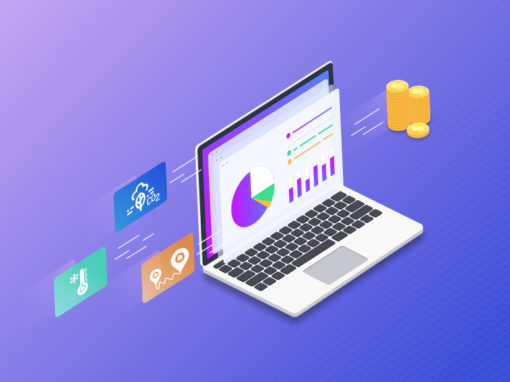
Always conduct research with the intention of gathering customer insights and mapping their journey. More downloads and more active users undoubtedly make an app successful. But the fact is, most app developers want to prosper by making the app business. So, if you want to make a business out of it, for that you must truly know your customers. By this, you can understand how to best utilize your limited developer resources by giving a personalized experience and the updates that deliver the best value.
The rising business models for apps are paving way for new opportunities to create a business, but not doing something concrete and resolving to guesswork is not advisable to get the criteria for your monetization needs. Try following a proactive approach to learning more about customers. Conducting targeted surveys is a good medium to uncover all the customer needs. You should always personalize your offerings as to what individual customer wants.
Awesome apps are those that render personalized experiences. The better you understand your users, the better you can attend to their user journey. For instance, some users like going for in-app purchases whereas some prefer premium versions of your apps so that they don’t have to see ads.
As your app opens the opportunity of a lucrative commerce channel, identify the differences in the customer behavior and choices and make sure that the time the user spent with the app revolves around the right products and grant a personally satisfying experience. Be it virtual goods or real services, custom presentations are a major scorer between average revenues and superb profits.
If you have formed a customer database and have a knack of the needs and desires of your customers, the differing experiences will be easier for you to program. With polished and focused communication abilities, it is simple to capitalize on these differences and totally the outcomes of your research to the competencies you have built.
The better you understand your users, the better you can attend to their user journey. For instance, some users like going for in-app purchases whereas some prefer premium versions of your apps so that they don’t have to see ads.
As your app opens the opportunity of a lucrative commerce channel, identify the differences in the customer behavior and choices and make sure that the time the user spends with the app revolves around the right products and grant a personally satisfying experience.
Be it virtual goods or real services, custom presentations are a major scorer between average revenues and superb profits. If you have formed a customer database and have a knack of the needs and desires of your customers, the differing experiences will be easier for you to program. With polished and focused communication abilities, it is simple to capitalize on these differences and totally the outcomes of your research to the competencies you have built.
Conclusion
As you advance your app and your app business, never forget the ‘math of the app business’; the sure-shot formula to success. By taking care that all your actions affect one of the four levels of the revenue in some way or the other, you can increase your resources and augment your profit.
If you work on enhancing your installs, getting higher retention and effectively monetizing your audience, you will definitely win more loyal and valuable customers and achieve higher rankings and better ratings. The equation might be easy, but the approach is not. It needs consistent investment, commitment, and evaluation to positively influence the variables of the equation and develop a sustainable app business.
